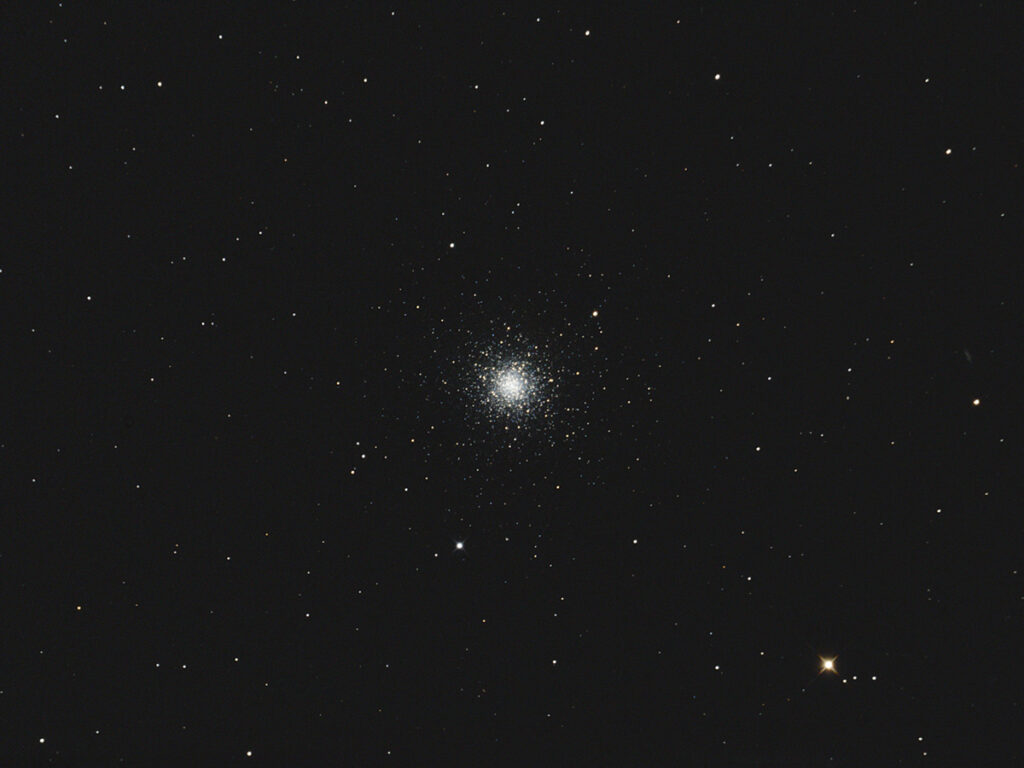
Telescope: Astro-Tech RC8 @ f/8, Orion Atlas EQ-G
Camera: Baader modified Nikon D610, Baader Mk III MPCC
Filter: Highpoint Scientific IR Filter
Guide scope: Astro-Tech 60mm, Starlight Xpress Super Star, PHD2
Exposure: 32x120sec, ISO 200, saved as RAW
Darks: Internal (Long Exposure Noise Reduction On)
Flats: 32×1/10sec, Tee shirt flats taken at dusk
Average Light Pollution: Red zone, Bortle 8, fair transparency, bright moonlight
Lensed Sky Quality Meter: 17.7 mag/arc-sec^2
Stacking: Mean with a 2-sigma clip.
White Balance: Nebulosity Automatic
Software: Backyard Nikon, Deep Sky Stacker, Photoshop
This was the first of three first-light images taken to test the performance of the full-frame Nikon D610a on the RC8 and with the Baader Mk III MPCC. This proved to be an excellent match with good star shapes across the field and only a bit of vignetting in the corners that were handled pretty well with flats. This is going to be a wonderful mid-field imaging system.
M3 is a beautiful example of a globular cluster in a relatively lonely stretch of sky. The cluster is a member of the galactic halo and spends much of its time orbiting well outside the plane of the galaxy. It is presently 33,000 light years away from us, 40,000 light years from the galactic core, and 33,000 light years ‘above’ the galactic plane. Home to about 500,000 stars, M3 is relatively young as globular clusters go with an estimated age of 8 billion years.
M3 is currently well placed in the northeast as the sky darkens.
Recent Comments